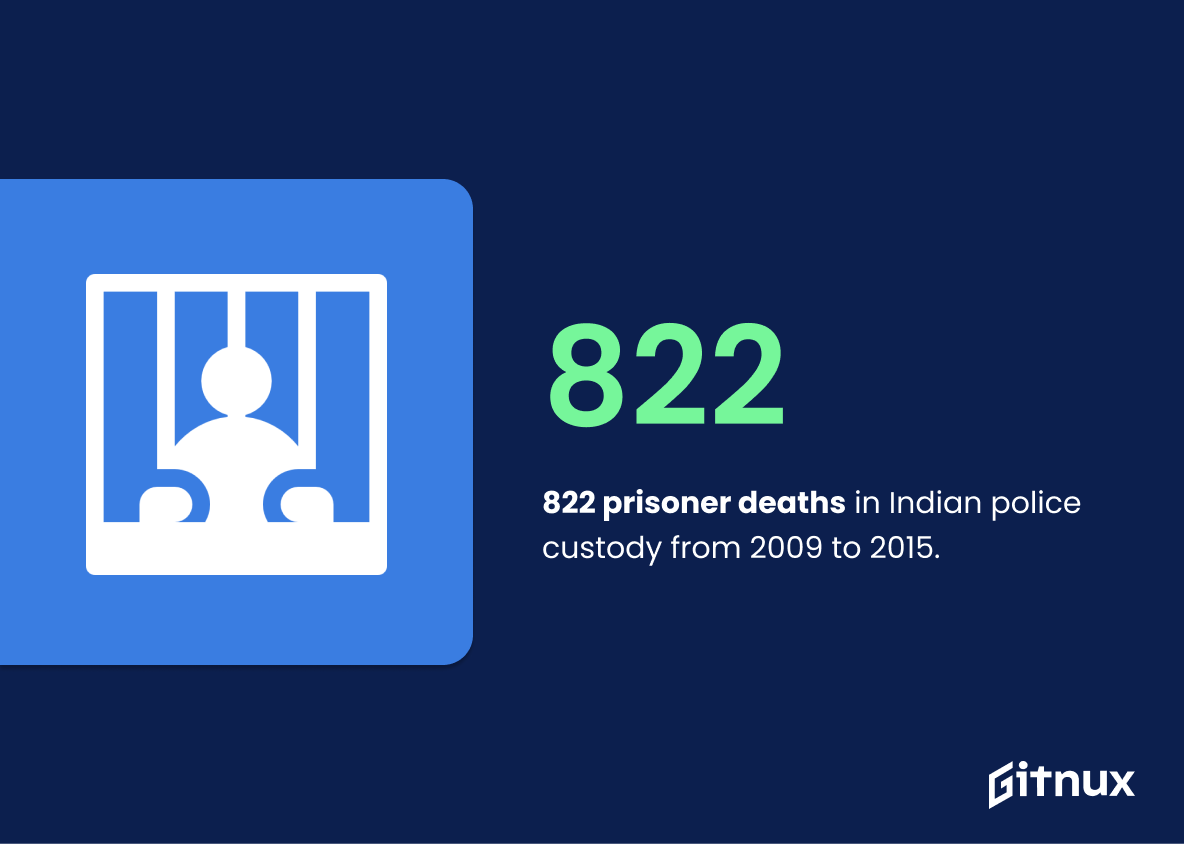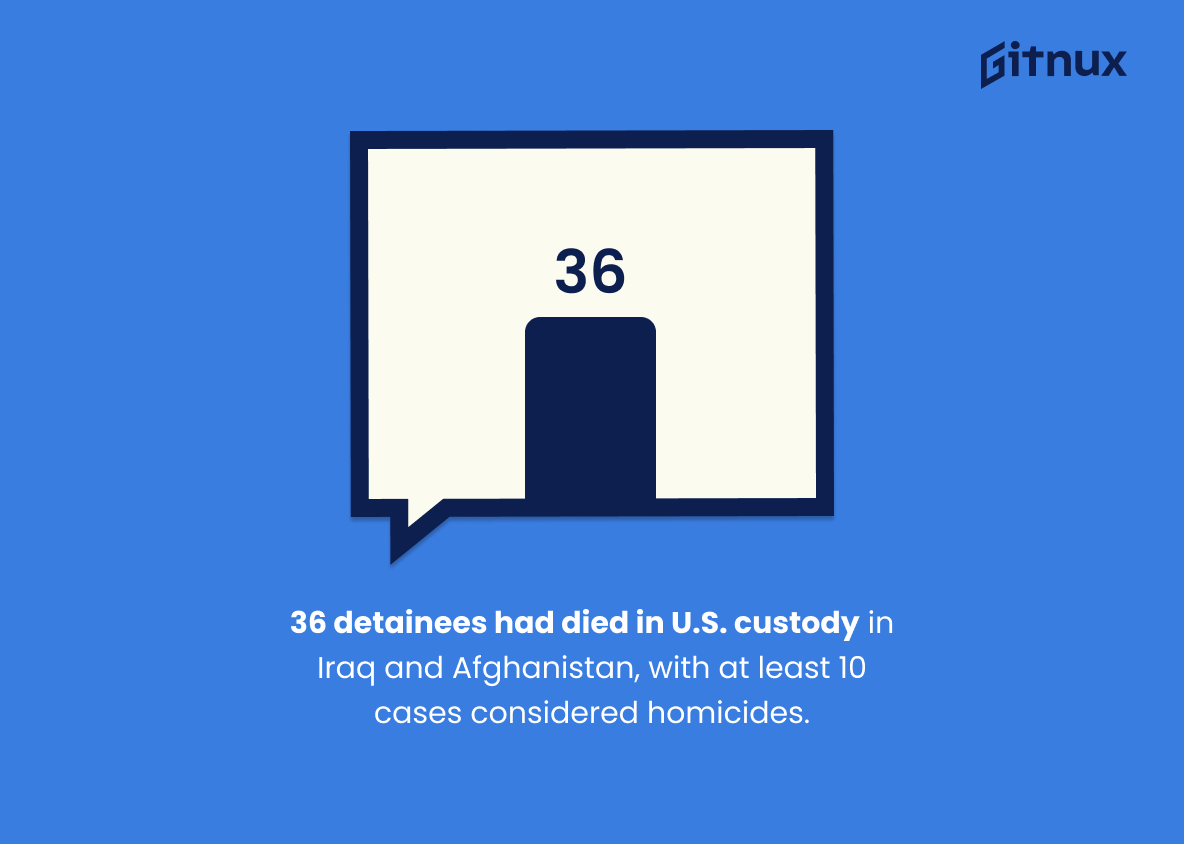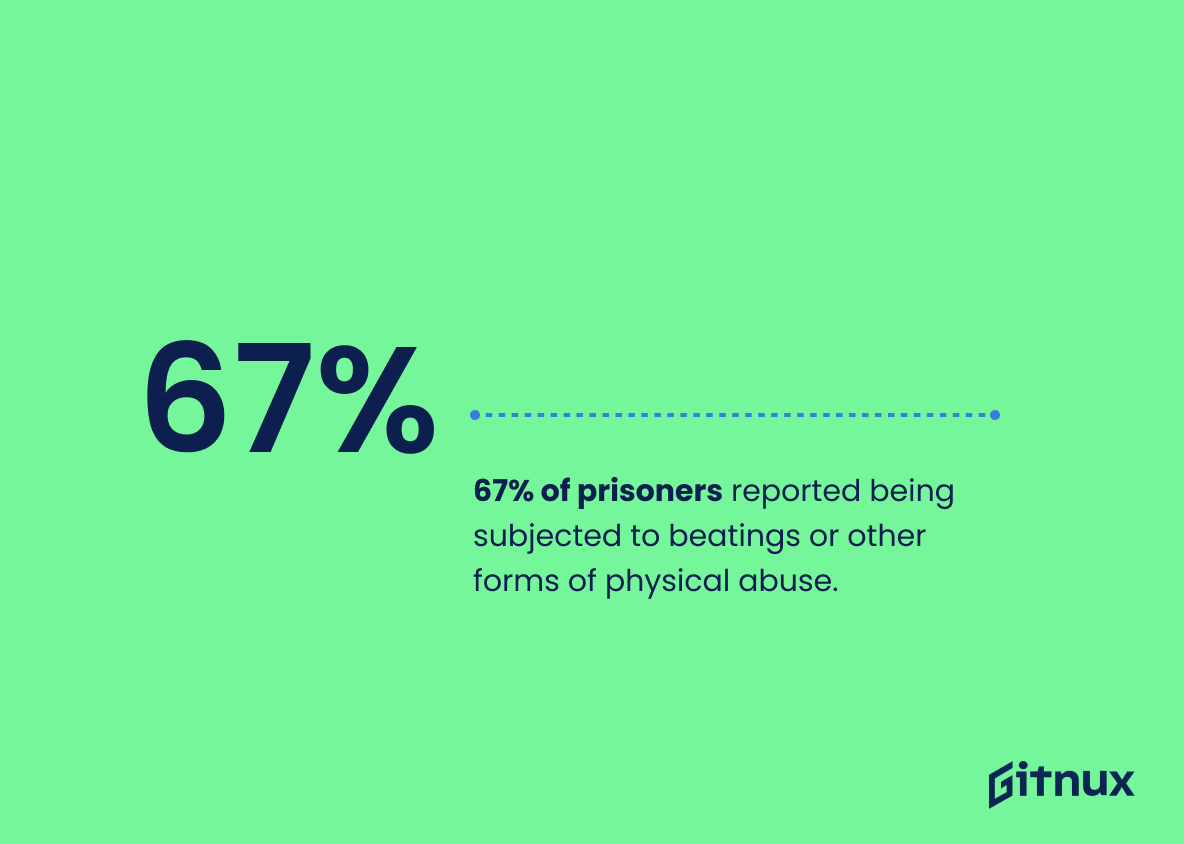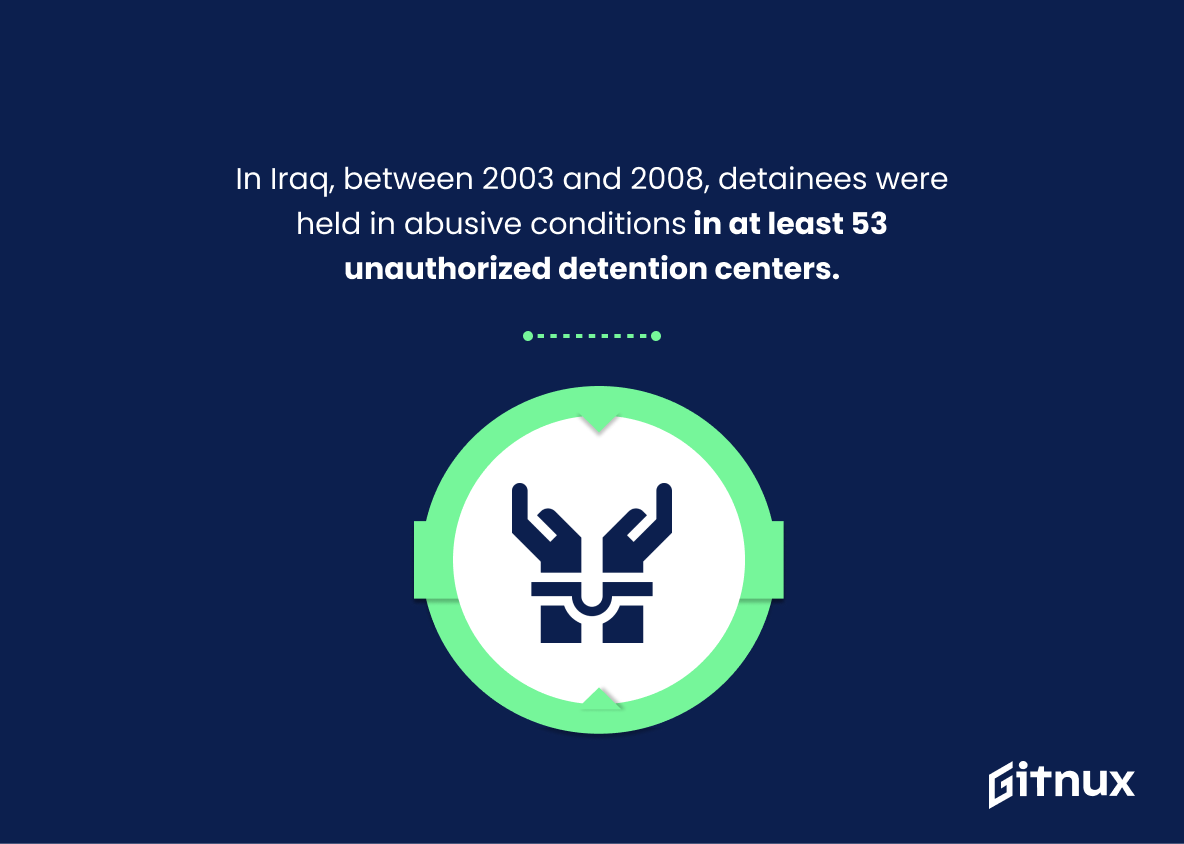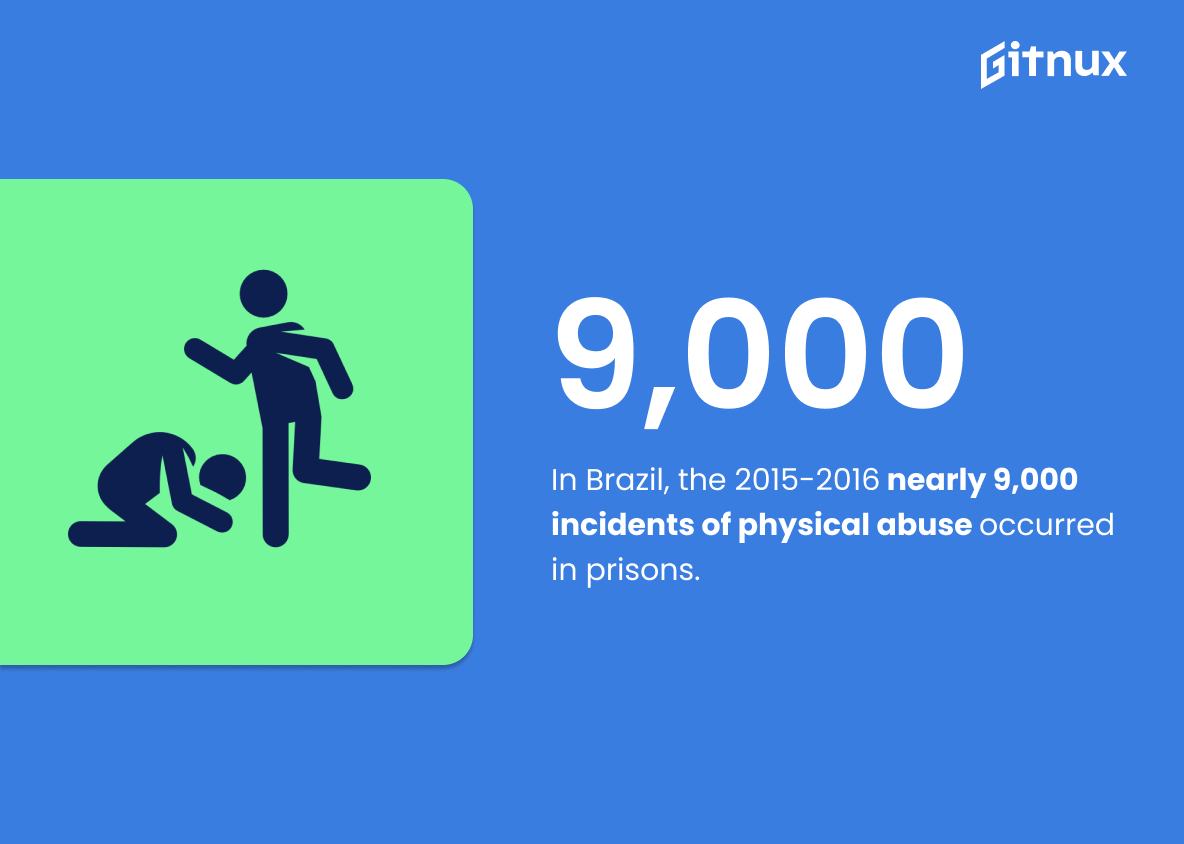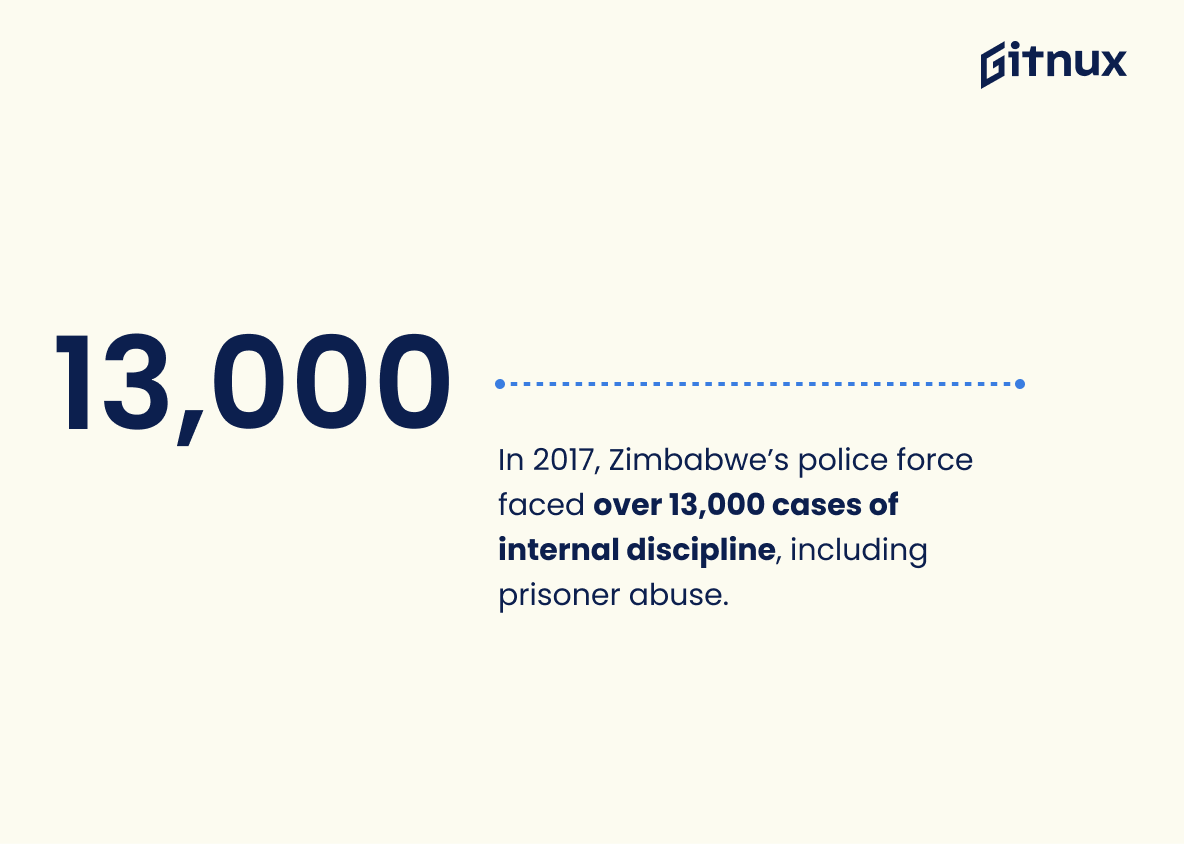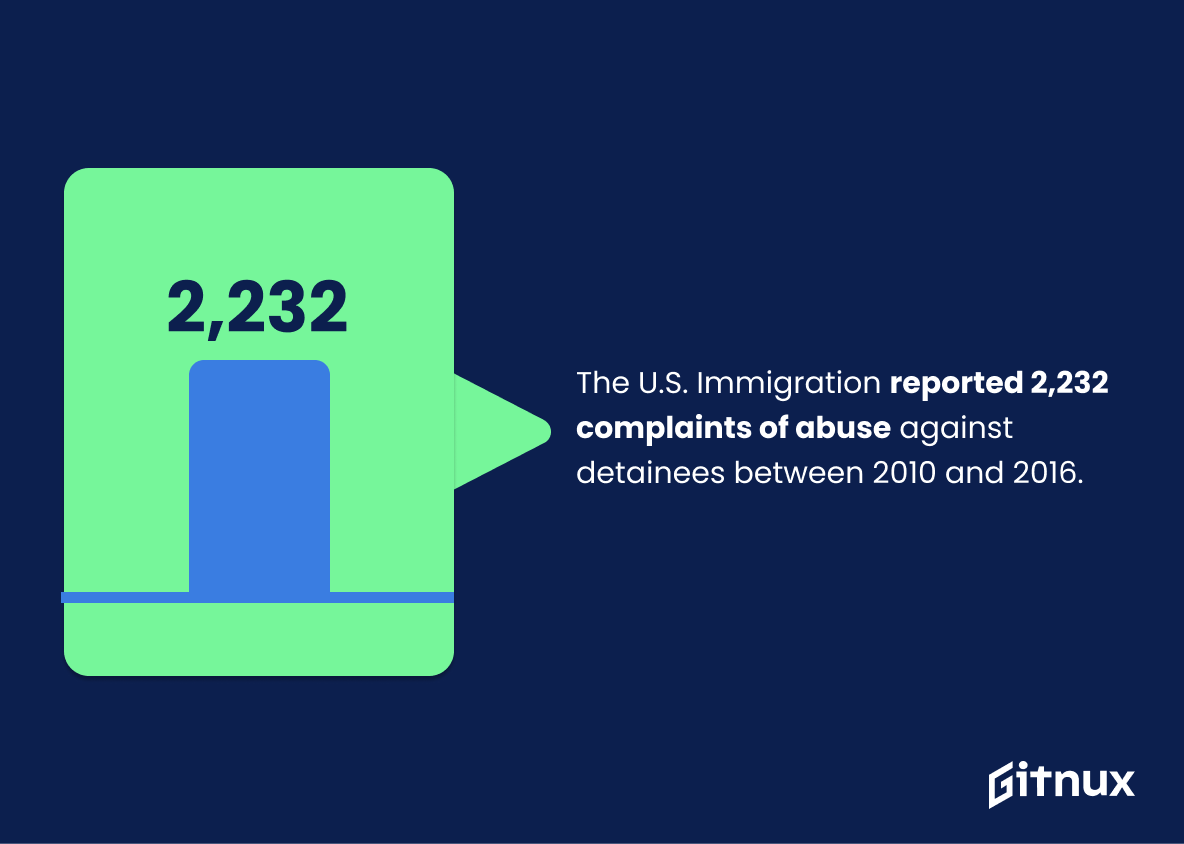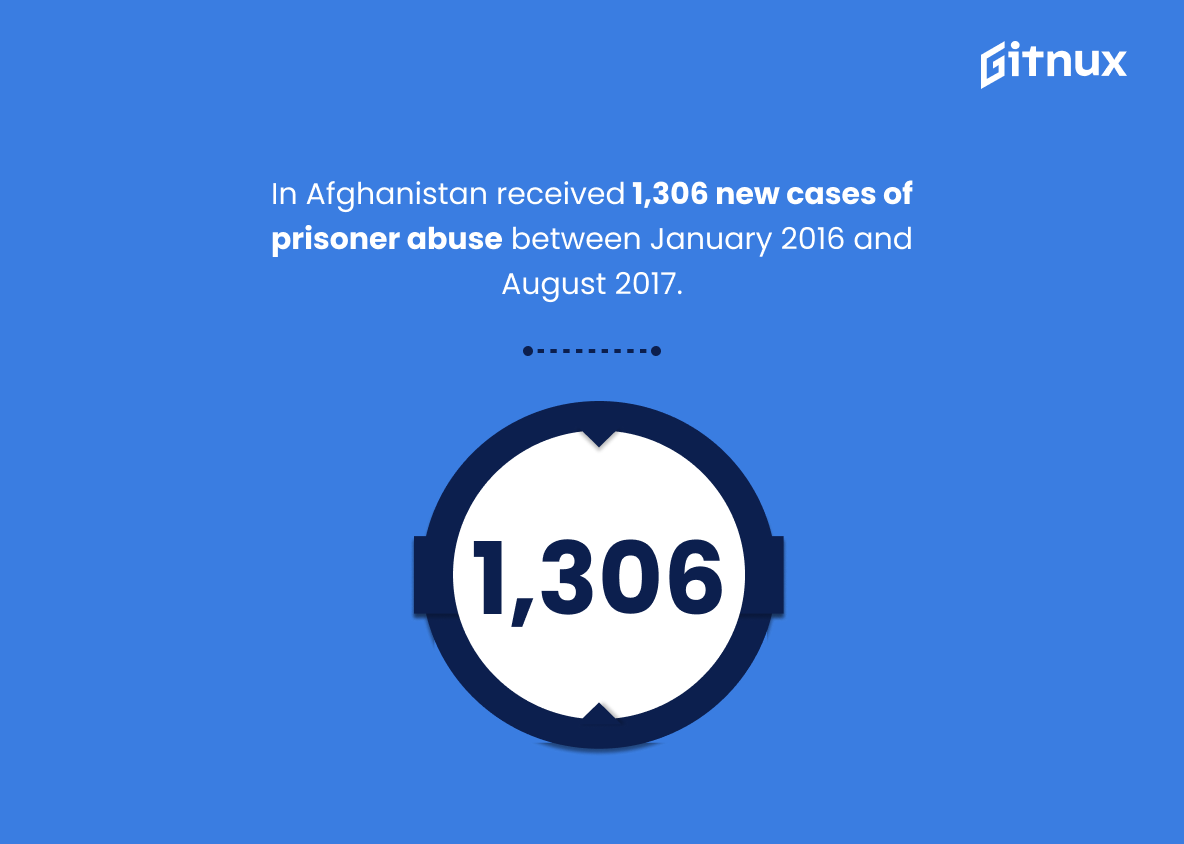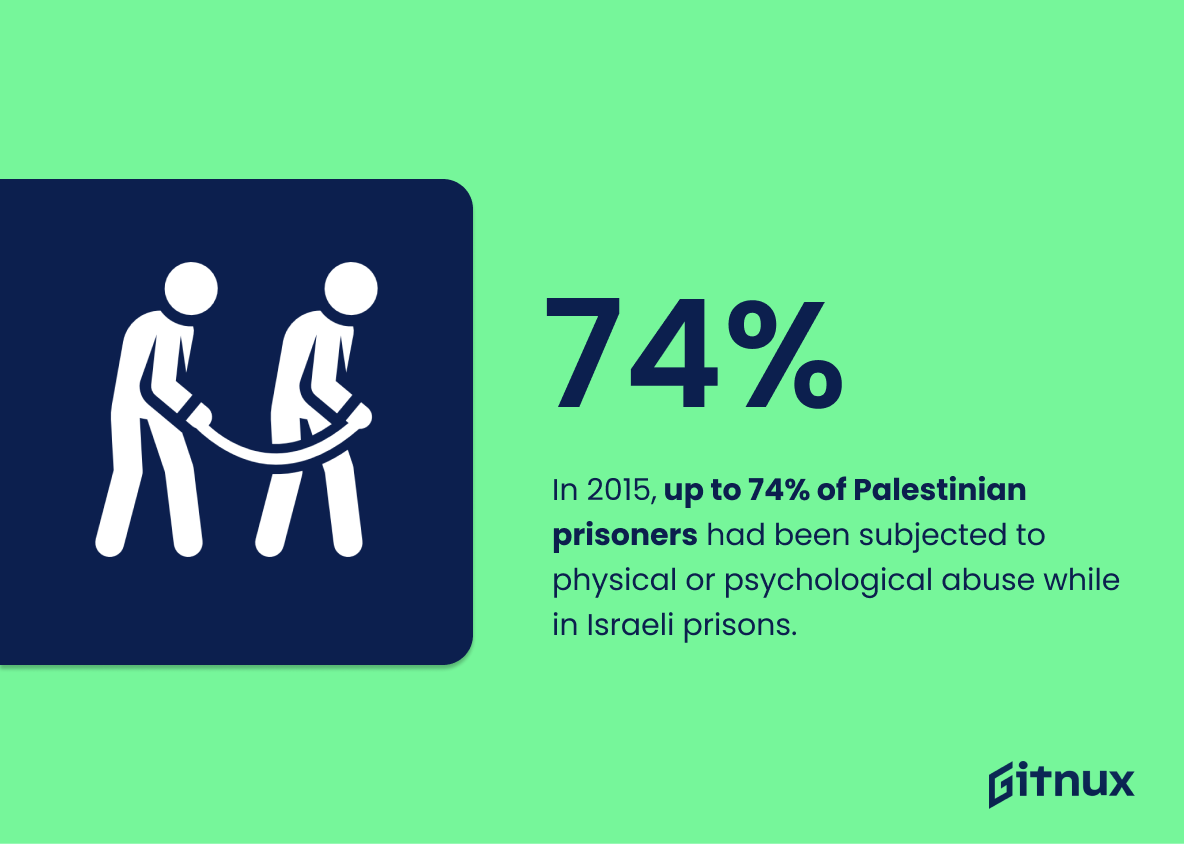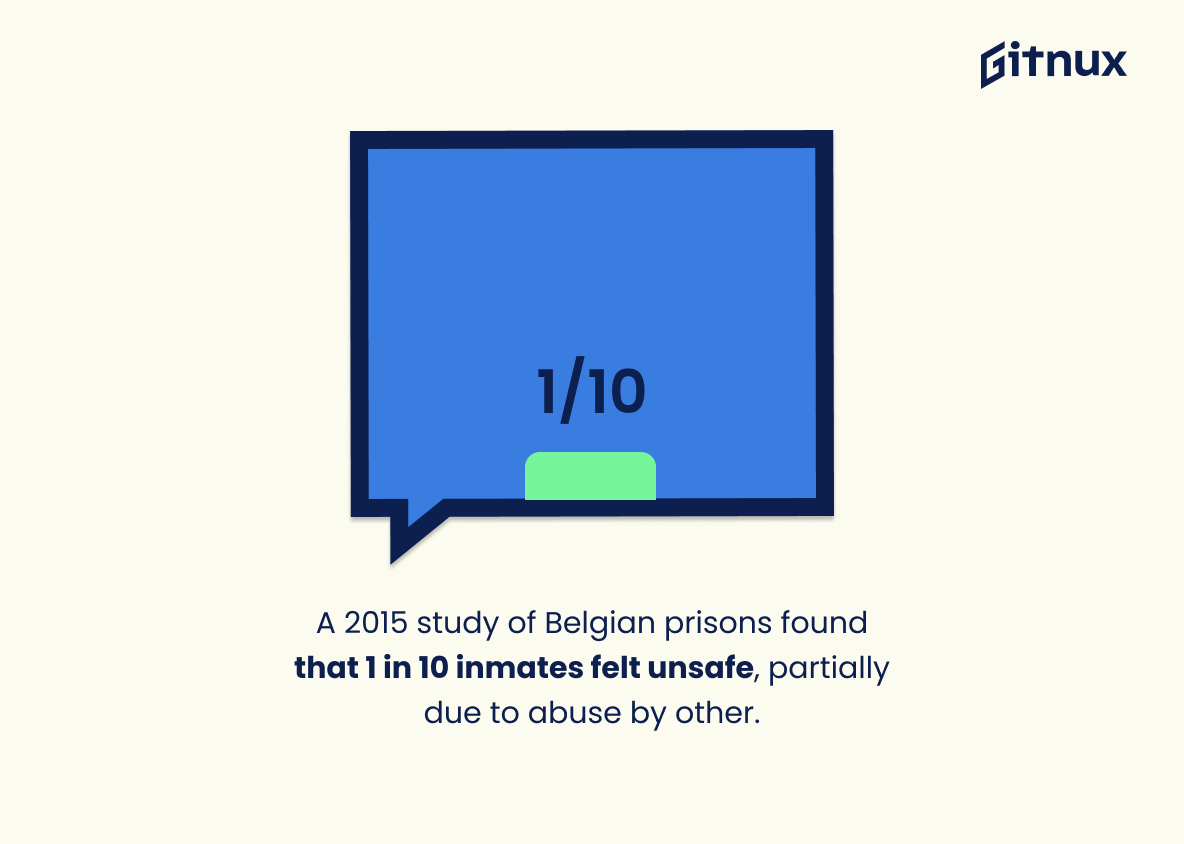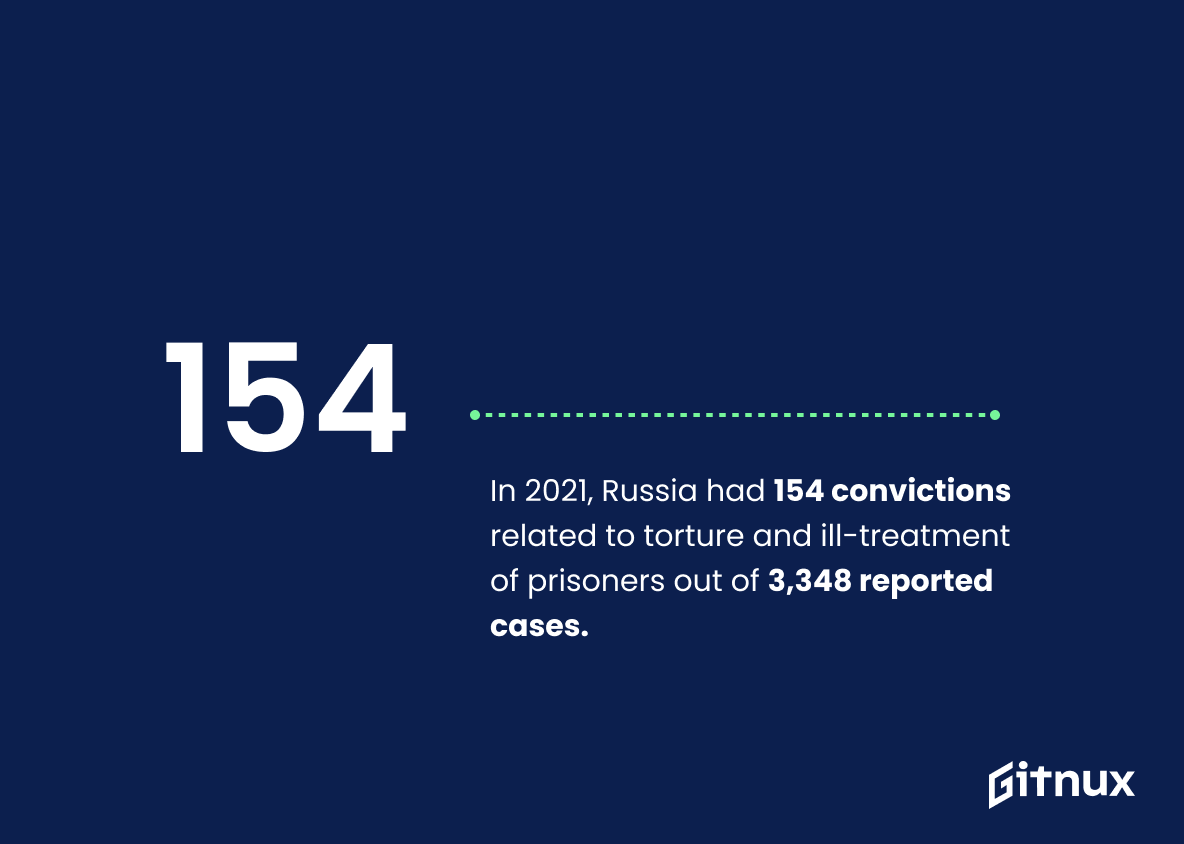This blog post will explore the alarming statistics of prisoner abuse around the world. We’ll look at reported cases in countries such as the United States, India, Cameroon, South Africa, Tunisia and Iraq; as well as Belgium and Russia.
Additionally we’ll examine reports from Amnesty International on Iran’s prisons between 1985-1990 and Human Rights Watch’s findings regarding U.S Customs & Border Protection employees’ allegations of prisoner abuse in 2006. Finally we’ll discuss a survey conducted by Australia which revealed that 16% of prisoners had been physically assaulted during detention in 2011.
Prisoner Abuse Statistics Overview
Human Rights Watch reported 822 documented prisoner deaths in police custody in India between 2009 and 2015, with 330 cases involving allegations of torture or ill-treatment.
This statistic is a stark reminder of the prevalence of prisoner abuse in India. It paints a grim picture of the state of human rights in the country, with 822 documented deaths in police custody and 330 cases involving allegations of torture or ill-treatment. It is a call to action for those concerned with the protection of human rights and the prevention of prisoner abuse.
In 2004, the U.S. military revealed that 36 detainees had died in U.S. custody in Iraq and Afghanistan, with at least 10 cases considered homicides.
This statistic is a stark reminder of the potential for abuse in U.S. military prisons in Iraq and Afghanistan. It highlights the need for greater oversight and accountability in these facilities, as well as the need for improved training and procedures to ensure that prisoners are treated humanely. It also serves as a warning that the U.S. must take steps to ensure that such abuses do not occur in the future.
In a 2013 survey in Cameroon, 67% of prisoners reported being subjected to beatings or other forms of physical abuse.
This statistic is a stark reminder of the prevalence of physical abuse in Cameroon’s prisons. It paints a vivid picture of the harsh reality that prisoners in Cameroon face, and serves as a call to action to address this issue.
In a 2016 study of South African prisoners, 40.7% reported experiencing physical abuse while in prison.
This statistic is a stark reminder of the prevalence of physical abuse in South African prisons. It highlights the need for greater attention to be paid to the issue of prisoner abuse, and for more effective measures to be taken to ensure the safety of inmates. It also serves as a warning to those who may be considering entering the prison system, that they may be at risk of physical abuse.
In Iraq, between 2003 and 2008, detainees were held in abusive conditions in at least 53 unauthorized detention centers, according to Human Rights Watch.
This statistic is a stark reminder of the human rights violations that occurred in Iraq between 2003 and 2008. It highlights the fact that detainees were held in inhumane conditions in numerous unauthorized detention centers, a clear violation of their rights. This statistic is an important part of the overall picture of prisoner abuse statistics, and serves as a reminder of the need for greater oversight and accountability in the treatment of prisoners.
In Brazil, the 2015-2016 National Survey of Penitentiary Information reported that nearly 9,000 incidents of physical abuse occurred in prisons.
This statistic is a stark reminder of the prevalence of physical abuse in Brazilian prisons. It paints a vivid picture of the harsh reality of life behind bars, and serves as a call to action for those who are in a position to make a difference. It is a powerful reminder that the issue of prisoner abuse is far from resolved, and that more needs to be done to ensure the safety and well-being of those in the prison system.
Amnesty International documented at least 15,000 cases of prisoner abuse in Iranian prisons between 1985 and 1990.
This statistic is a stark reminder of the prevalence of prisoner abuse in Iranian prisons during the 1980s. It serves as a powerful illustration of the need for greater oversight and accountability in the prison system, and highlights the importance of ensuring that prisoners are treated humanely and with respect for their basic human rights.
In 2017, Zimbabwe’s police force faced over 13,000 cases of internal discipline, including prisoner abuse.
This statistic is a stark reminder of the prevalence of prisoner abuse in Zimbabwe’s police force. It highlights the need for greater oversight and accountability within the force, as well as the need for more effective measures to prevent and address such abuses. It also serves as a warning to other countries that prisoner abuse is a serious issue that must be addressed.
The U.S. Immigration and Customs Enforcement reported 2,232 complaints of abuse against detainees in their facilities between 2010 and 2016.
This statistic is a stark reminder of the prevalence of abuse in detention facilities across the United States. It paints a vivid picture of the reality of the situation, and serves as a call to action for those who are concerned about the mistreatment of detainees. It is a powerful reminder that more needs to be done to ensure that detainees are treated with dignity and respect.
The United Nations Assistance Mission in Afghanistan received 1,306 new cases of prisoner abuse between January 2016 and August 2017.
This statistic is a stark reminder of the prevalence of prisoner abuse in Afghanistan. It highlights the fact that, despite the efforts of the United Nations Assistance Mission in Afghanistan, the problem of prisoner abuse is still very much alive and well. This statistic serves as a call to action, urging us to take a stand against this injustice and work towards a more humane and just society.
In 2015, it was estimated that up to 74% of Palestinian prisoners had been subjected to physical or psychological abuse while in Israeli prisons.
This statistic is a stark reminder of the prevalence of physical and psychological abuse of Palestinian prisoners in Israeli prisons. It highlights the need for greater awareness and action to ensure that prisoners are treated humanely and with respect for their human rights. It also serves as a reminder of the ongoing struggle for justice and freedom for Palestinians in the region.
A 2015 study of Belgian prisons found that 1 in 10 inmates felt unsafe, partially due to abuse by other inmates and staff.
This statistic is a stark reminder of the reality of prison life for many inmates. It highlights the prevalence of abuse in prisons, both from other inmates and staff, and the impact it has on the safety of those incarcerated. It serves as a call to action to address the issue of prisoner abuse and ensure that all inmates are treated with dignity and respect.
In 2021, Russia had 154 convictions related to torture and ill-treatment of prisoners out of 3,348 reported cases.
This statistic paints a stark picture of the prevalence of torture and ill-treatment of prisoners in Russia in 2021. With only 4.6% of reported cases resulting in convictions, it is clear that the issue of prisoner abuse is still a major problem in the country. This statistic serves as a reminder that more needs to be done to ensure that prisoners are treated with dignity and respect.
Conclusion
The statistics presented in this blog post demonstrate the prevalence of prisoner abuse around the world. From 2011 to 2021, reports of physical and psychological abuse have been documented in countries such as India, Cameroon, South Africa, Tunisia, Iraq, Australia, Brazil Iran Zimbabwe and Belgium.
In addition to these cases reported by human rights organizations or government agencies within each country’s borders; there are also numerous instances of prisoner abuse that go unreported due to lack of access or fear from those affected. It is clear that more needs to be done globally in order for prisoners’ rights and safety standards across all nations to be upheld.
References
0. – https://www.www.aclu.org
1. – https://www.www.addameer.org
2. – https://www.www.hrw.org
3. – https://www.freedomhouse.org
4. – https://www.wonder.cdc.gov
5. – https://www.www.cnj.jus.br
6. – https://www.www.detentionwatchnetwork.org
7. – https://www.www.ncbi.nlm.nih.gov
8. – https://www.unama.unmissions.org
9. – https://www.www.refworld.org
